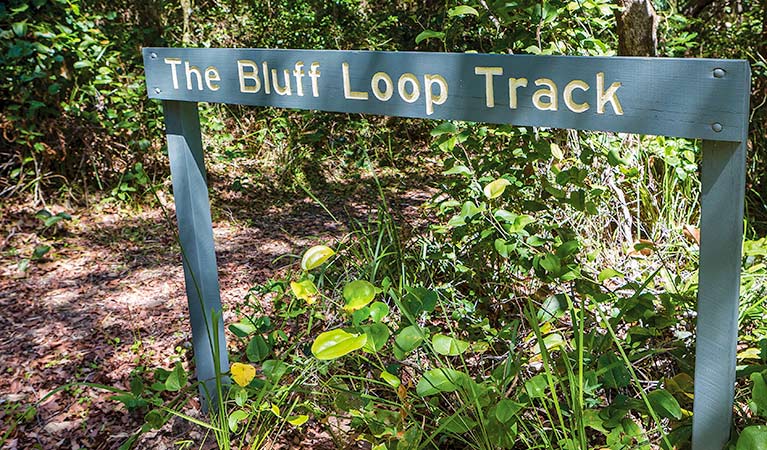Bluff loop walking track
Bongil Bongil National Park
Overview
Bluff loop walking track is a short, easy walk through coastal forest, in Bongil Bongil National Park. It offers school group tours, Aboriginal culture and koala spotting.
- Where
- Bongil Bongil National Park in North Coast
- Distance
- 2.25km loop
- Time suggested
- 45min - 1hr 15min
- Grade
- Grade 2
- What to
bring - Drinking water, sunscreen, hat
Bluff loop walking track is a great track for kids or anyone keen to explore the coastal forests of Bongil Bongil National Park, near Coffs Harbour.
Starting and ending at the locked gate, Bluff loop walking track winds through coastal rainforest thick with vines, palms and tall trees, in a protected area behind the sand dunes. Bring your binoculars to spot the local birdlife. If you're lucky you may even see a koala in the treetops.
Bluff loop picnic area, is a lovely spot where you can enjoy a relaxing picnic at the top of the forested seaside bluff. Up on the ridge, you’ll discover an astonishing range of eucalypt species including forest red gum, red mahogany and pink bloodwood.
Further along the track, a short 120m side track takes you to a secluded timber viewing platform over Bundageree Creek. From here, continue along Bluff loop walking track until it meets Bundageree Rainforest walk. Turn right to loop back to your start point via the rainforest walk and Tuckers Rock Road.
Aboriginal walking tours of Bluff loop walking track are available for school groups, to discover the history and culture of the traditional Gumbaynggirr People of this area.
Map
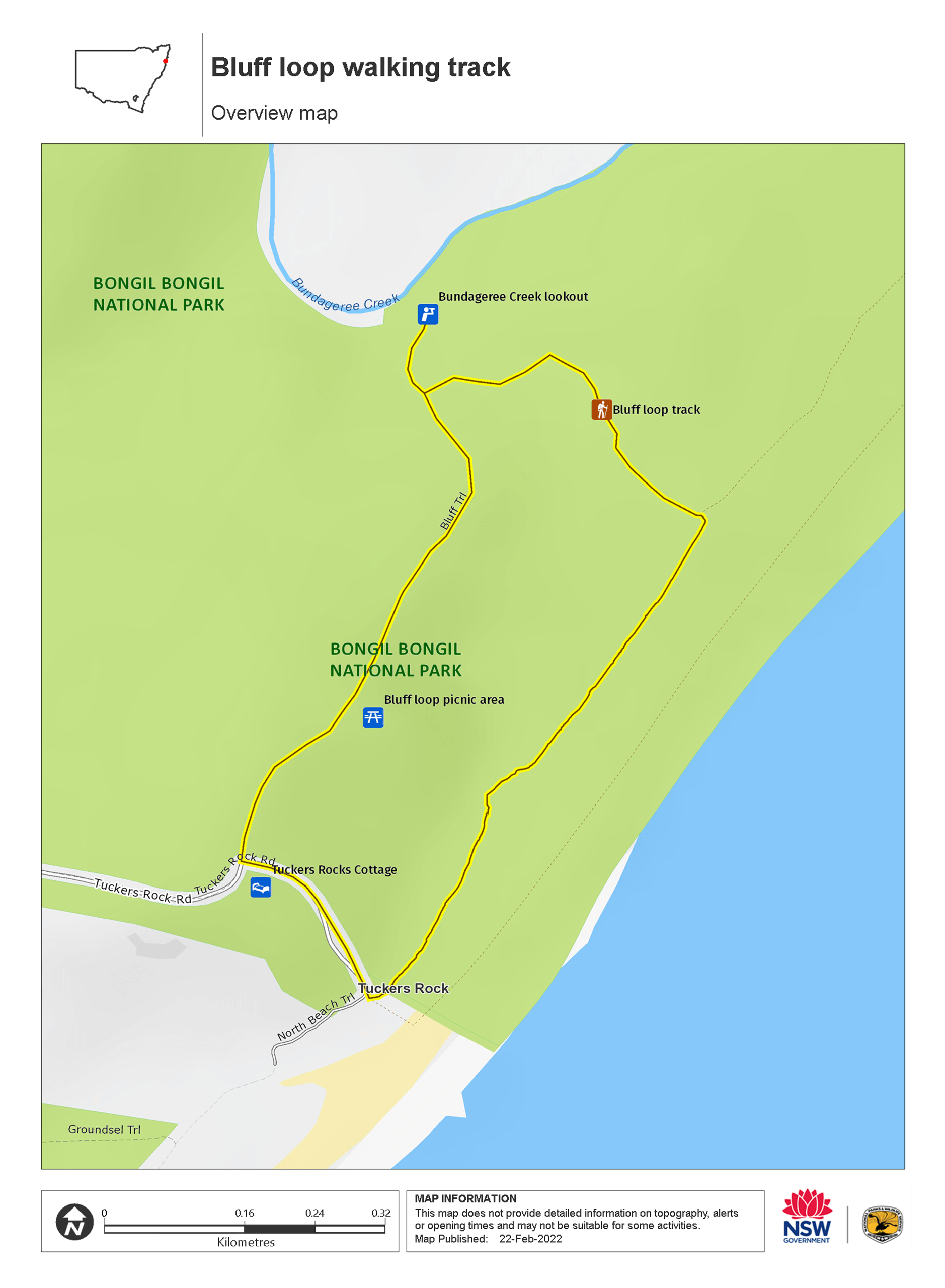
Map legend

Local alerts
For the latest updates on fires, closures and other alerts in this area, see https://www.nationalparks.nsw.gov.au/things-to-do/walking-tracks/bluff-loop-walking-track/local-alerts
General enquiries
- National Parks Contact Centre
- 7am to 7pm daily
- 1300 072 757 (13000 PARKS) for the cost of a local call within Australia excluding mobiles
- parks.info@environment.nsw.gov.au
Park info
- in Bongil Bongil National Park in the North Coast region
Bongil Bongil National Park is always open but may have to close at times due to poor weather or fire danger.
Visitor info
All the practical information you need to know about Bluff loop walking track.
Track grading
Features of this track
Distance
2.25km loop
Time
45min - 1hr 15min
Quality of markings
Clearly sign posted
Experience required
No experience required
Gradient
Gentle hills
Steps
Occasional steps
Quality of path
Formed track
Getting there and parking
Get driving directions
Bluff loop walking track is in the Tuckers Rocks area of Bongil Bongil National Park. To get there:
- From Old Pacific Highway at Repton, turn east onto Perrys Road.
- Continue on Perrys Road, which becomes Tuckers Rock Road, leading through the national park.
- When you see Tuckers Rocks Cottage on your right, park at the Tuckers Rocks carpark.
- Bluff loop track starts at the locked gate, just north of the cottage.
Please note that Rutile trail does not provide access to Mylsetom from Tuckers Rock Road. This road is a dead end that runs into a 2m deep swamp.
Parking
Parking is available at Tuckers Rocks carpark, a short 100m walk from Bluff loop trackhead. It can be a busy place on the weekend, so parking might be limited then.
Maps and downloads
Prohibited
Pets
Pets and domestic animals (other than certified assistance animals) are not permitted. Find out which regional parks allow dog walking and see the pets in parks policy for more information.
Smoking
NSW national parks are no smoking areas.
Learn more
Bluff loop walking track is in Bongil Bongil National Park. Here are just some of the reasons why this park is special:
A place where one stays a long time
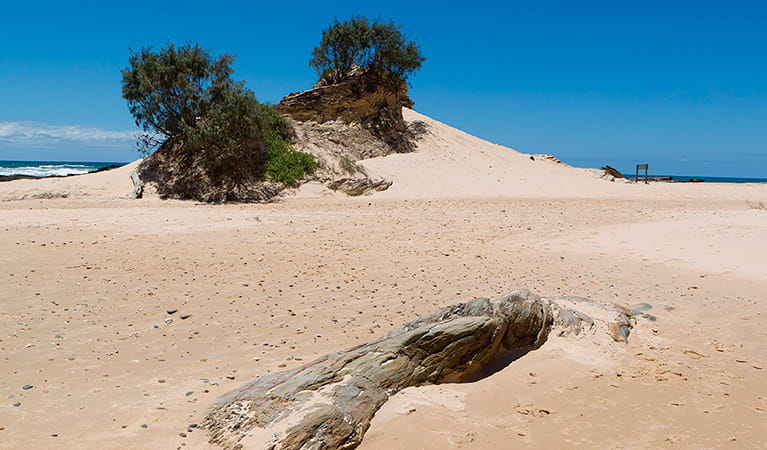
Bongil Bongil National Park is the traditional land of the Gumbaynggir people, whose ancestral lands extend from Grafton in the north to the Nambucca river in the south, and from the coast west to the headwaters of the Nymboida river. The park provided abundant seafood and bushtucker, and was a site for gatherings and sacred ceremonies.
- Bush tucker Bush tucker is a Stage 4 (Years 7-8) school excursion to Bongil Bongil National Park, which focuses on Geography. Join our Aboriginal Discovery rangers for an easy stroll along the forested banks of Bonville Creek, to investigate the rich diversity of plants and animals in the park.
- Bush tucker Bush tucker in Bongil Bongil National Park is a school excursion for Stage 2 (Years 3-4) students with a focus on Geography and History. Join our Aboriginal Discovery rangers for an easy stroll along the forested banks of Bonville Creek, to investigate the rich diversity of plants and animals in the park.
- Bush tucker in Bongil Bongil National Park Share the bush secrets of the traditional Gumbaynggirr People in Bush tucker – a Stage 3 (Years 5-6) excursion in Bongil Bongil National Park. Aboriginal guides will reveal their special connection to Country and their secrets for health, wellness and survival.
Beaches and waterways
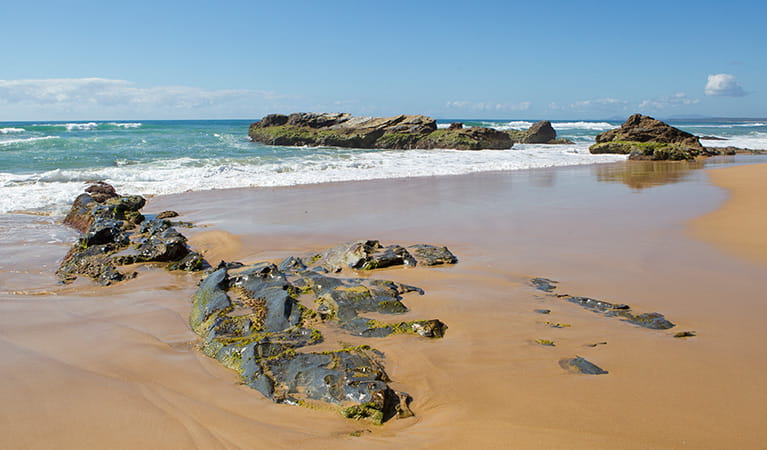
The waterways within Bongil Bongil National Park carry water across the coastal plains from the steep foothills to the west, providing a home for many types of birds, animals and reptiles. For visitors, the waterways and beaches in Bongil Bongil National Park offer a range of water activities, including excellent fishing and kayaking. Try your luck on the Bonville river for flathead and whiting.
Birdwatcher's haven
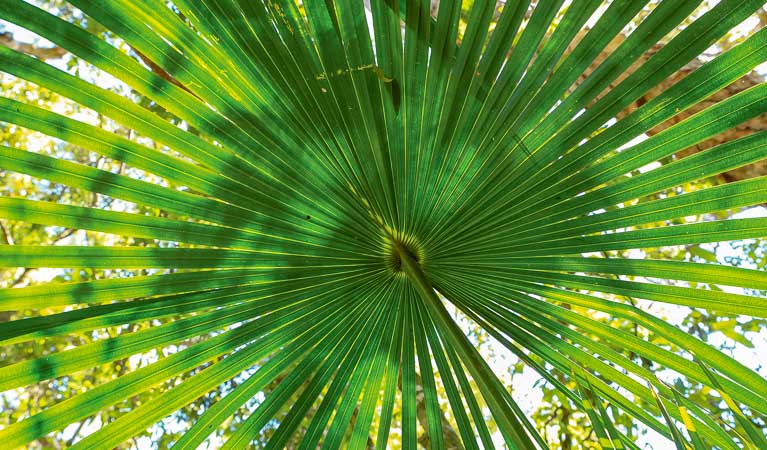
In addition to being home to one of NSW's largest koala populations, Bongil Bongil National Park also boasts more than 165 species of birds. The park provides breeding, roosting and feeding habitats for a number of migratory birds like the little tern and the pied oystercatcher. The Bundageree Rainforest walk is the best place to see the birds of the rainforest, like the dramatically beautiful wompoo fruit dove and the colourful rose-crowned fruit dove that makes a loud and explosive "hookco" sound.
- Pine Creek paddle route Adventurous canoeists, kayakers, and stand-up paddle boarders will enjoy this downstream route along pristine Pine Creek, a wildlife haven in Bongil Bongil National Park, near Coffs Harbour.
Plants and animals protected in this park
Animals
-
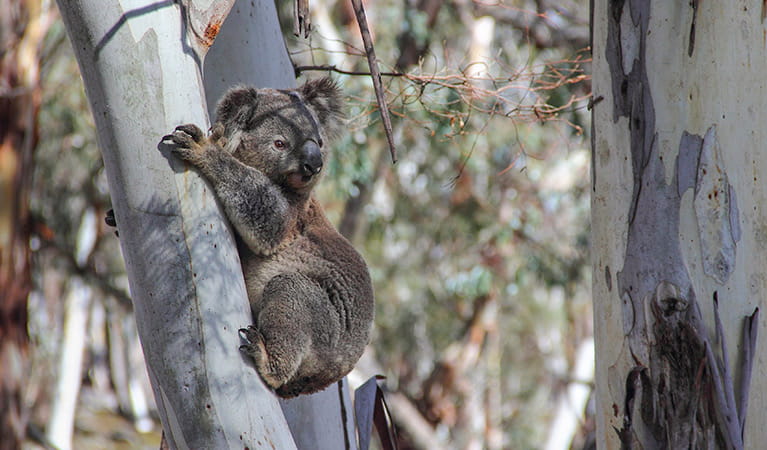
Koala (Phascolarctos cinereus)
One of the most renowned Australian animals, the tree-dwelling marsupial koala can be found in gum tree forests and woodlands across eastern NSW, Victoria and Queensland, as well as in isolated regions in South Australia. With a vice-like grip, this perhaps most iconic but endangered Australian animal lives in tall eucalypts within a home range of several hectares.
-
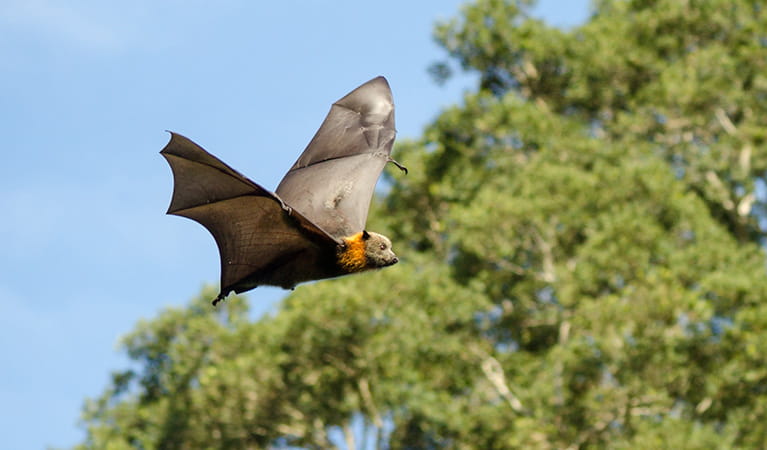
Grey-headed flying-fox (Pteropus poliocephalus)
The grey-headed flying fox is Australia's largest native bat, with a wingspan up to 1m. This threatened species travels up and down south-eastern Australia and plays a vital role in pollinating plants and spreading seeds in our native forests.
-
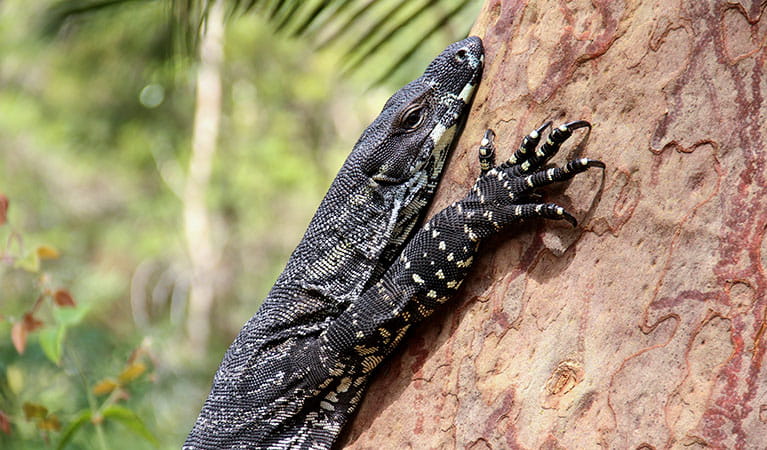
Lace monitor (Varanus varius)
One of Australia’s largest lizards, the carnivorous tree-dwelling lace monitor, or tree goanna, can grow to 2m in length and is found in forests and coastal tablelands across eastern Australia. These Australian animals are typically dark blue in colour with whitish spots or blotches.
Plants
-
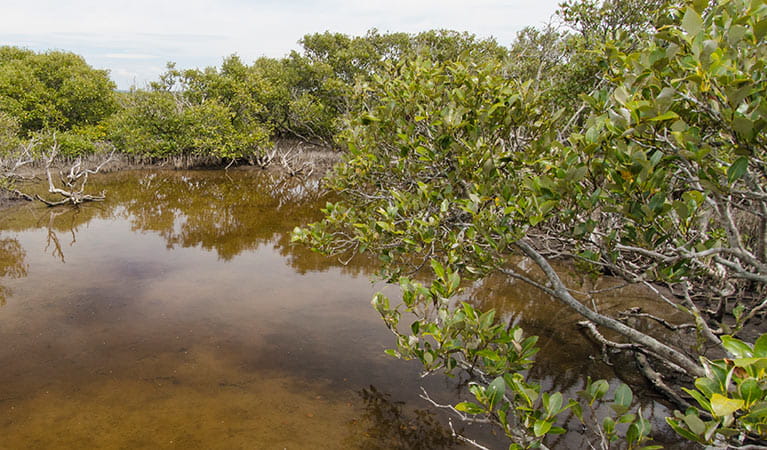
Grey mangrove (Avicennia marina)
Grey mangrove is the most common and widespread mangrove found within intertidal zones across Australia, and throughout the world. Growing to a height of 3-10m, they thrive best in estuaries with a mix of fresh and salt water. They excrete excess salt through their long thick leaves, and absorb oxygen through their aerial root system.
-
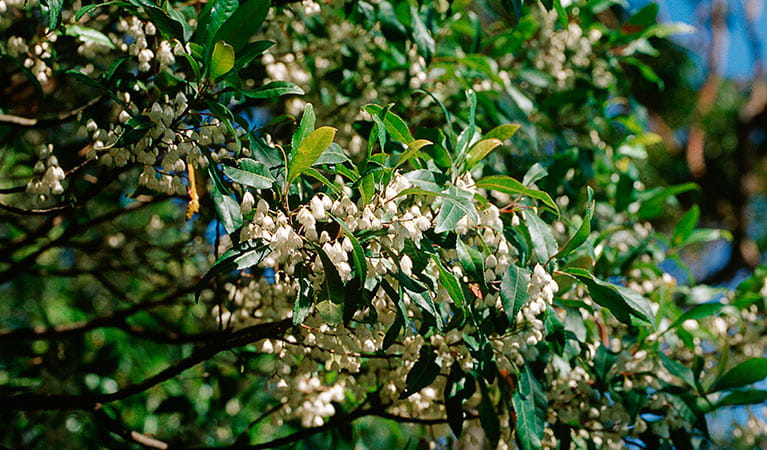
Blueberry ash (Elaeocarpus reticulatus)
The blueberry ash is a rainforest shrub which produces blue olive-shaped berries and spectacular bell-shaped flowers, which often appear on the plant together. It is a tall slender shrub or small tree found in rainforest, tall eucalypt forest and coastal bushland in eastern NSW, south-east Queensland and Victoria.

